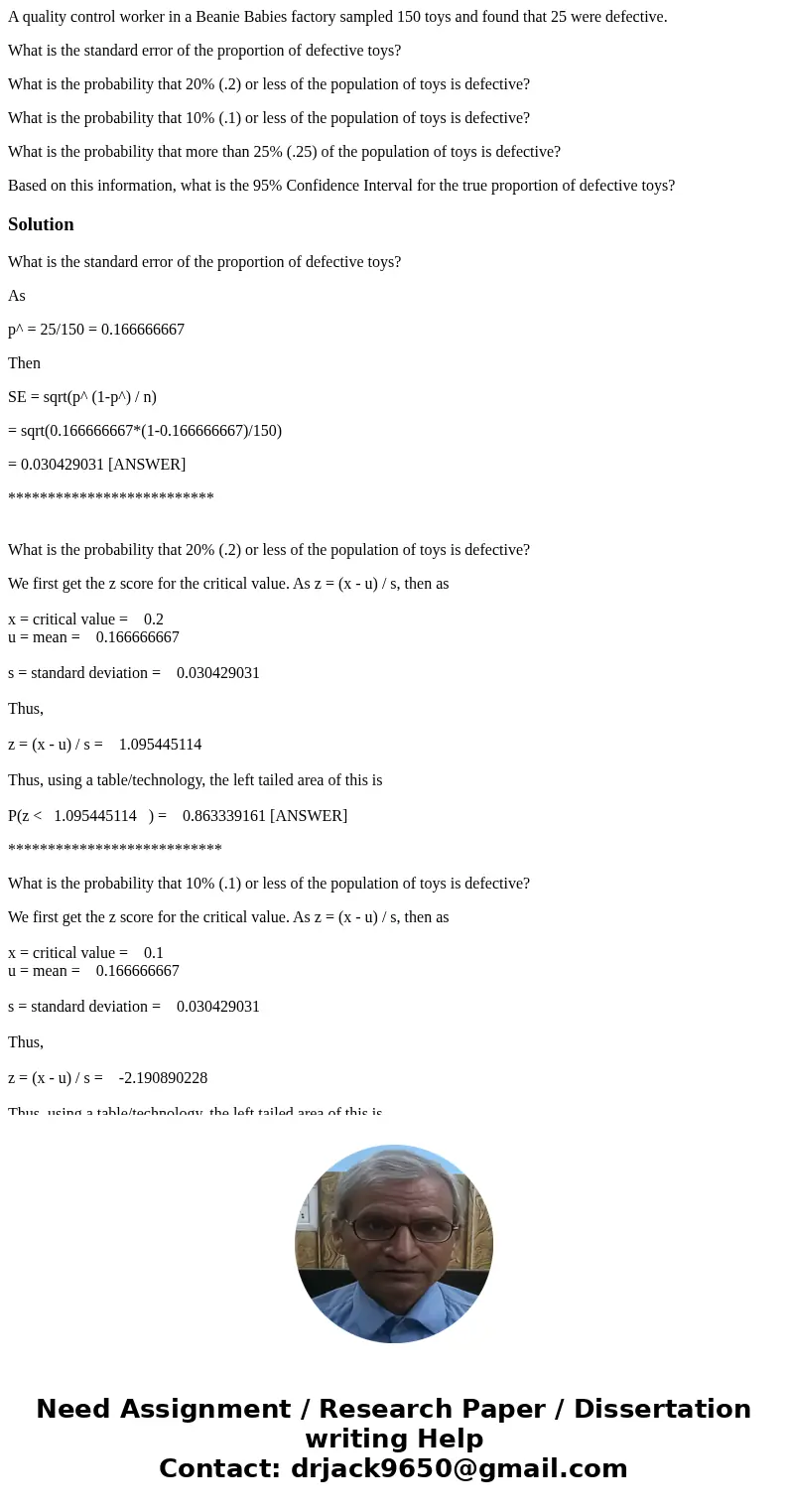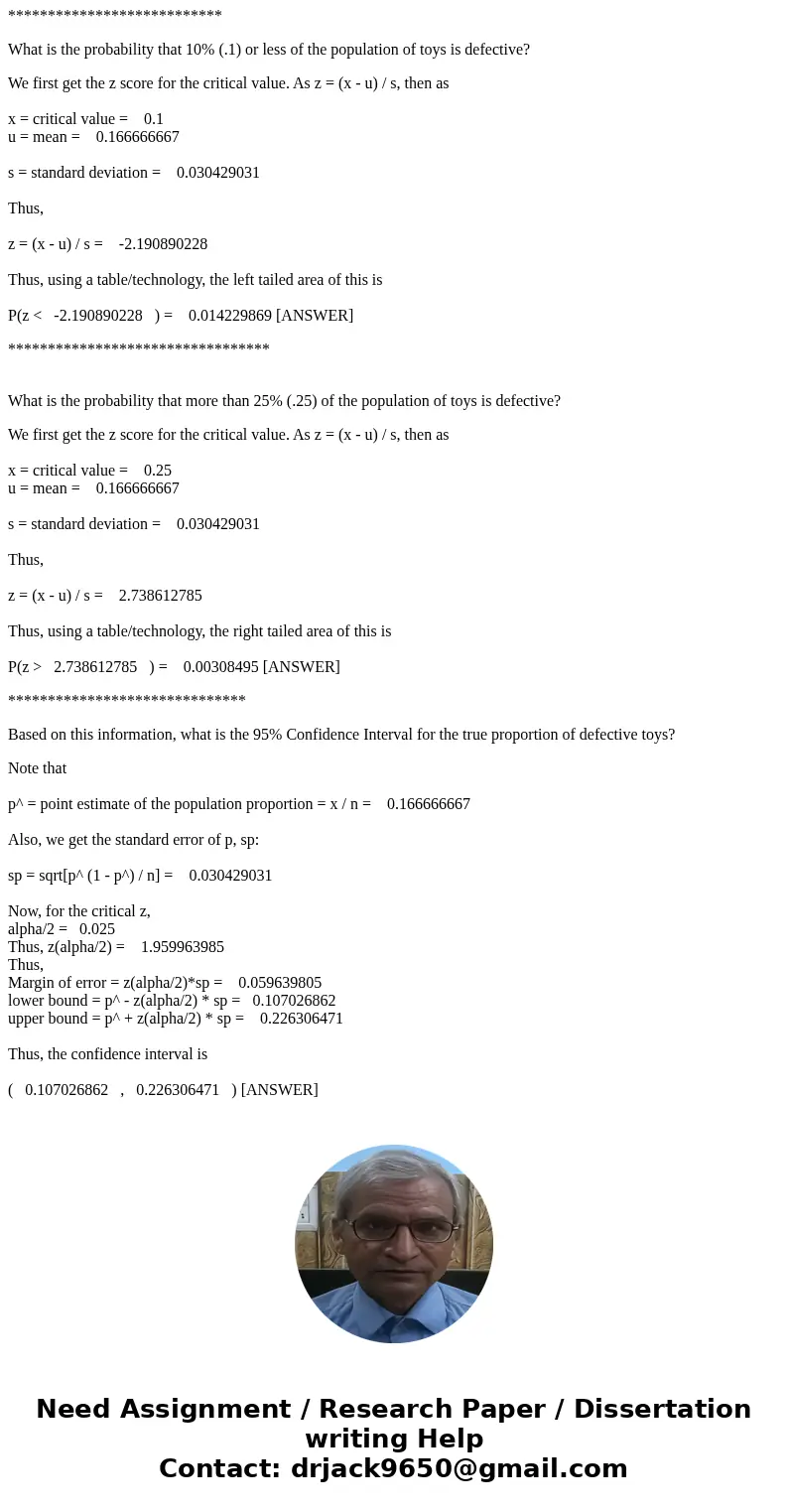A quality control worker in a Beanie Babies factory sampled
A quality control worker in a Beanie Babies factory sampled 150 toys and found that 25 were defective.
What is the standard error of the proportion of defective toys?
What is the probability that 20% (.2) or less of the population of toys is defective?
What is the probability that 10% (.1) or less of the population of toys is defective?
What is the probability that more than 25% (.25) of the population of toys is defective?
Based on this information, what is the 95% Confidence Interval for the true proportion of defective toys?
Solution
What is the standard error of the proportion of defective toys?
As
p^ = 25/150 = 0.166666667
Then
SE = sqrt(p^ (1-p^) / n)
= sqrt(0.166666667*(1-0.166666667)/150)
= 0.030429031 [ANSWER]
**************************
What is the probability that 20% (.2) or less of the population of toys is defective?
We first get the z score for the critical value. As z = (x - u) / s, then as
x = critical value = 0.2
u = mean = 0.166666667
s = standard deviation = 0.030429031
Thus,
z = (x - u) / s = 1.095445114
Thus, using a table/technology, the left tailed area of this is
P(z < 1.095445114 ) = 0.863339161 [ANSWER]
***************************
What is the probability that 10% (.1) or less of the population of toys is defective?
We first get the z score for the critical value. As z = (x - u) / s, then as
x = critical value = 0.1
u = mean = 0.166666667
s = standard deviation = 0.030429031
Thus,
z = (x - u) / s = -2.190890228
Thus, using a table/technology, the left tailed area of this is
P(z < -2.190890228 ) = 0.014229869 [ANSWER]
*********************************
What is the probability that more than 25% (.25) of the population of toys is defective?
We first get the z score for the critical value. As z = (x - u) / s, then as
x = critical value = 0.25
u = mean = 0.166666667
s = standard deviation = 0.030429031
Thus,
z = (x - u) / s = 2.738612785
Thus, using a table/technology, the right tailed area of this is
P(z > 2.738612785 ) = 0.00308495 [ANSWER]
******************************
Based on this information, what is the 95% Confidence Interval for the true proportion of defective toys?
Note that
p^ = point estimate of the population proportion = x / n = 0.166666667
Also, we get the standard error of p, sp:
sp = sqrt[p^ (1 - p^) / n] = 0.030429031
Now, for the critical z,
alpha/2 = 0.025
Thus, z(alpha/2) = 1.959963985
Thus,
Margin of error = z(alpha/2)*sp = 0.059639805
lower bound = p^ - z(alpha/2) * sp = 0.107026862
upper bound = p^ + z(alpha/2) * sp = 0.226306471
Thus, the confidence interval is
( 0.107026862 , 0.226306471 ) [ANSWER]


 Homework Sourse
Homework Sourse